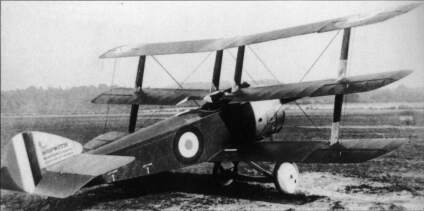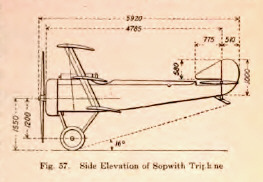
click to enlarge





Flown by Captain Ray Collishaw, one of the great Canadian aces of WW1.
From February to July 1917, one of the most unusual British fighters, the Sopwith Triplane, served in France. It had a short, but brilliant, career until it was superseded by the Sopwith Camel. During the six months that it flew, the triplane alarmed the Germans and drove their aviation industry to desperate measures to catch up.
[ad#ad-1]Engine: 130 hp, Clerget 9B 9-cylinder air-cooled rotary
Wingspan: 26 ft. 6 in.
Length: 18 ft. 10 in.
Height: 10 ft. 6 in.
Weight: 1,541 lb.
Max. speed: 117 mph at 15,000 ft.
Ceiling: 20,500 ft.
Endurance: 2 hours
Armament: 1 machine gun
Crew: 1
Herbert Smith started design work on a triplane in late 1916, about the same time as the Blackburn triplane (a complete failure). The Sopwith prototype flew on March 29, 1917, and soon it generated great enthusiasm in British airmen, so that 400 were ordered. Ultimately, much of the order was cancelled as only the RNAS accepted the triplane. The navy’s units soon enjoyed their first successes, especially Canadian Ray Collishaw, who downed 7 enemy planes and damaged another 17 in May and June of 1917.
As the Camel came on line, the numbers of Triplanes diminished. By October, only one squadron was equipped with it. Production totaled 144.
Specifications from “Practical Aviation,â€